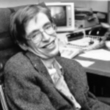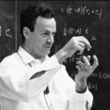The search for superstrings, symmetry, and the theory of everything
Description
More Details
9780316092920
9780316168823
Table of Contents
From the Book - First North American edition.
Excerpt
Similar Titles From NoveList
Similar Authors From NoveList
Published Reviews
Booklist Review
Unless one holds a physics doctorate and can tolerate 26 dimensions, the world of the "supersmall" seems unapproachably alien. Once again, the guide to the frontier is Gribbin, prolific popularizer of physics and physicists. Elsewhere he has explained quantum mechanics (In Search of Schr\x9a dinger's Cat, 1984); here he introduces the "quarky" zoo of subatomic particles and their mediating forces, Gribbin himself mediating for generalists the theories advanced to explain and unify them. Regularly cautioning that genuine understanding of the theories requires complex mathematics, Gribbin nevertheless achieves a verbal "compactification," to borrow string theory jargon, that at least allows the "numero-phobic" to appreciate why physicists are superexcited about supersymmetry and superstrings. Although no particle accelerator has ever created a string, the putative irreducible entity responsible for all particles and forces, physicists are jumping on the string bandwagon--and daring ones are constructing an even more arcane vehicle to describe everything: "membrane" theory. In these mind-bending realms, Gribbin's seasoned skills wonderfully simplify matters (and forces) without "dumbifying" them. --Gilbert Taylor
Publisher's Weekly Review
Ever since Einstein came up with the General Theory of Relativity, the Holy Grail of physics has been a "Theory of Everything" that would explain the behavior of all the particles and forces in nature in one set of equations. Popular science writer Gribbin tackles this quest in a thorough yet palatable primer geared to the serious reader. He starts with a clear introduction to the subatomic particle zoo (the subject of his last book, Schrödinger's Kittens and the Search for Reality). Where once protons, neutrons and electrons reigned, there is now a "periodic table" of particles, and physicists have to worry about a potentially infinite number of types of particles with names like W and Z bosons, red up quarks, blue down quarks, etc. From there, Gribbin moves on to supersymmetry, a theory that attempts to bring Einsteinian space-time back into the quantum-mechanical fold of contemporary particle physics. Many physicists now treat particles not as points but as strings, tiny one-dimensional entities vibrating in 10-dimensional space-time. Gribbin helps us get our bearings in a universe of 11 dimensions, and while he refrains from the cosmic speculations of, say, Paul Davies, diligent readers without any specialized knowledge of physics or mathematics will come away with a flavor of the latest ideas theorists are grappling with, including the six major rival contenders for the TOE (Theory of Everything). An appendix previews the experiments scientists are planning in their attempts to create "little bangs," particle-accelerator collisions that may reveal what types of matter arose during the primal Big Bang. Overall, this is an exciting tour de force. 23 drawings. (Jan.) (c) Copyright PWxyz, LLC. All rights reserved
Library Journal Review
Writing in his clear prose style, prolific science writer Gribbin (Q Is for Quantum, LJ 1/99) introduces the general reader to the mysterious world of high-energy physicsa formidable task because of the complex theories involved; nevertheless, he translates these ideas into a readable, enjoyable narrative. His extensive historical treatment of physics research from the foundation work done in the 19th century to the latest concepts of superstrings is remarkable. Gribbin takes the reader to a world of multidimensionsa fictionlike picturewhere scientists are trying to merge the forces of the universe in a grand unified theory called supersymmetry, a topic he also covered in In Search of the Big Bang (1986). For popular physics collections. [Previewed in Prepub Alert, LJ 9/15/98.]Nestor Osorio, Univ. Libs, Northern Illinois Univ., DeKalb (c) Copyright 2010. Library Journals LLC, a wholly owned subsidiary of Media Source, Inc. No redistribution permitted.
Kirkus Book Review
Physics changes so rapidly that a new survey of its landmarks is necessary every few years; here's an update from a popular British science writer. The focus in this book (a spinoff from the author's earlier The Search for Black Holes) is the nature of matter. Our modern conception of matter dates from the realization roughly a century ago that the atom, in theory the tiniest particle of matter, was itself a compound entity. The discovery of radioactivity opened up a window to peer inside atoms, revealing some of the structural units (electrons, the nucleus) of which these ``indivisible'' atoms are made. Ernest Rutherford's ``classical'' picture of the atom as a small but solid nucleus surrounded by a whirling cloud of electrons, had taken shape by the 1920s. But this easily understood model was rapidly modified, as quantum theory began to blur the intuitive divisions between matter and energy. The number of subatomic particles also underwent a population explosion, leading to quantum chromodynamics, in which the ultimate divisions of matter are invisible quarks and gluons, from which other particles are built. But even this ``standard model'' fails to unite the various forces and particles into a coherent structure; thus the search for a Grand Unified Theory, the holy grail of modern physics. This takes us into the rarefied territory of supersymmetry, superstrings, and gauge theory in a ten-dimensional matrix. Gribbin gives the reader a good overview of the progress to date of this research, describing its key experiments and noting the contributions of various scientists, and making the theory itself as clear as possible for readers not prepared to tackle serious math. Perhaps in ten years' time the key questions will be answered'always assuming that some new discovery doesn't send everyone back to the starting line again. A clear and comprehensive popular treatment of the cutting edge of physics.
Booklist Reviews
Unless one holds a physics doctorate and can tolerate 26 dimensions, the world of the "supersmall" seems unapproachably alien. Once again, the guide to the frontier is Gribbin, prolific popularizer of physics and physicists. Elsewhere he has explained quantum mechanics (In Search of Schrx9a dinger's Cat, 1984); here he introduces the "quarky" zoo of subatomic particles and their mediating forces, Gribbin himself mediating for generalists the theories advanced to explain and unify them. Regularly cautioning that genuine understanding of the theories requires complex mathematics, Gribbin nevertheless achieves a verbal "compactification," to borrow string theory jargon, that at least allows the "numero-phobic" to appreciate why physicists are superexcited about supersymmetry and superstrings. Although no particle accelerator has ever created a string, the putative irreducible entity responsible for all particles and forces, physicists are jumping on the string bandwagon--and daring ones are constructing an even more arcane vehicle to describe everything: "membrane" theory. In these mind-bending realms, Gribbin's seasoned skills wonderfully simplify matters (and forces) without "dumbifying" them. ((Reviewed January 1 & 15, 1999)) Copyright2000 Booklist Reviews
Library Journal Reviews
Following on the heels of Greene's book, here is a title on string theory from the author of the best-selling Schrödinger's Kittens. Copyright 1998 Library Journal Reviews
Library Journal Reviews
Writing in his clear prose style, prolific science writer Gribbin (Q Is for Quantum, LJ 1/99) introduces the general reader to the mysterious world of high-energy physics a formidable task because of the complex theories involved; nevertheless, he translates these ideas into a readable, enjoyable narrative. His extensive historical treatment of physics research from the foundation work done in the 19th century to the latest concepts of superstrings is remarkable. Gribbin takes the reader to a world of multidimensions a fictionlike picture where scientists are trying to merge the forces of the universe in a grand unified theory called supersymmetry, a topic he also covered in In Search of the Big Bang (1986). For popular physics collections. [Previewed in Prepub Alert, LJ 9/15/98.] Nestor Osorio, Univ. Libs, Northern Illinois Univ., DeKalb Copyright 1999 Library Journal Reviews
Publishers Weekly Reviews
Ever since Einstein came up with the General Theory of Relativity, the Holy Grail of physics has been a "Theory of Everything" that would explain the behavior of all the particles and forces in nature in one set of equations. Popular science writer Gribbin tackles this quest in a thorough yet palatable primer geared to the serious reader. He starts with a clear introduction to the subatomic particle zoo (the subject of his last book, Schrödinger's Kittens and the Search for Reality). Where once protons, neutrons and electrons reigned, there is now a "periodic table" of particles, and physicists have to worry about a potentially infinite number of types of particles with names like W and Z bosons, red up quarks, blue down quarks, etc. From there, Gribbin moves on to supersymmetry, a theory that attempts to bring Einsteinian space-time back into the quantum-mechanical fold of contemporary particle physics. Many physicists now treat particles not as points but as strings, tiny one-dimensional entities vibrating in 10-dimensional space-time. Gribbin helps us get our bearings in a universe of 11 dimensions, and while he refrains from the cosmic speculations of, say, Paul Davies, diligent readers without any specialized knowledge of physics or mathematics will come away with a flavor of the latest ideas theorists are grappling with, including the six major rival contenders for the TOE (Theory of Everything). An appendix previews the experiments scientists are planning in their attempts to create "little bangs," particle-accelerator collisions that may reveal what types of matter arose during the primal Big Bang. Overall, this is an exciting tour de force. 23 drawings. (Jan.) Copyright 1998 Publishers Weekly Reviews































